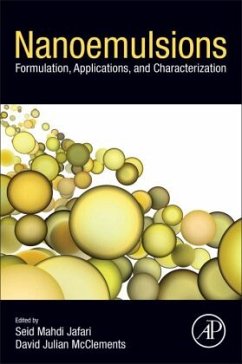
Simulation, Fabrication and Characterization of Advanced MOSFETs:
Graded-Channel and Multiple-Gate Devices in SOI Technology for Analog and RF Applications.
Versandkostenfrei!
Versandfertig in 6-10 Tagen
52,99 €
inkl. MwSt.

PAYBACK Punkte
26 °P sammeln!
The evolution of semiconductor has been growing sincethe first transistor was invented in 1900. Theindustry today is a very important market andworldwide sales for the past years has been growingrapidly and is now a multi-billion industry. In theindustry, the main govern by the "Moore's rule". Thislead to the industry answer by the creation ofthe International Roadmap for Semiconductor. In thepast century, semiconductor transistors have movedrapidly and technology nodes have been shrinkingevery two years following Moore's rule. Materialshave been moving from bulk silicon to Silicon-on-Insulato...
The evolution of semiconductor has been growing since
the first transistor was invented in 1900. The
industry today is a very important market and
worldwide sales for the past years has been growing
rapidly and is now a multi-billion industry. In the
industry, the main govern by the "Moore's rule". This
lead to the industry answer by the creation of
the International Roadmap for Semiconductor. In the
past century, semiconductor transistors have moved
rapidly and technology nodes have been shrinking
every two years following Moore's rule. Materials
have been moving from bulk silicon to Silicon-on-
Insulator wafers. In the past few
years, technologists have come to a point where they
have recognized that this shrinking phenomenon and
high demand for the capability of the transistors in
the semiconductor industry is coming to a halt if no
new design or technology can be found. In order to
overcome this halt, various new ideas have been
proposed; among them the use of asymmetrical channel
doping, multiple-gate MOSFETs and Silicon-on-Nothing
MOSFETs. In this work, an overview of these ideas
are presented via means of simulations and
measurements where possible.
the first transistor was invented in 1900. The
industry today is a very important market and
worldwide sales for the past years has been growing
rapidly and is now a multi-billion industry. In the
industry, the main govern by the "Moore's rule". This
lead to the industry answer by the creation of
the International Roadmap for Semiconductor. In the
past century, semiconductor transistors have moved
rapidly and technology nodes have been shrinking
every two years following Moore's rule. Materials
have been moving from bulk silicon to Silicon-on-
Insulator wafers. In the past few
years, technologists have come to a point where they
have recognized that this shrinking phenomenon and
high demand for the capability of the transistors in
the semiconductor industry is coming to a halt if no
new design or technology can be found. In order to
overcome this halt, various new ideas have been
proposed; among them the use of asymmetrical channel
doping, multiple-gate MOSFETs and Silicon-on-Nothing
MOSFETs. In this work, an overview of these ideas
are presented via means of simulations and
measurements where possible.












